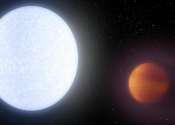NASA deploys satellite designed to re-enter atmosphere using revamped drag device
NASA mission controllers confirmed that a small satellite launched from the International Space Station at 5:30 p.m. PST on Tuesday, March 3, has successfully entered its orbit, setting the stage to test technology that could ...









